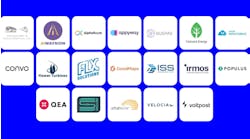Autodesk and Virgin Hyperloop One partner to explore advanced route optimization, transportation design, construction technology
Autodesk, Inc. And Virgin Hyperloop One have teamed up to explore new opportunities in extending the value of Building Information Modeling (BIM) for transportation route optimization and improved digital engineering and construction workflows.
"Virgin Hyperloop One is pushing the boundaries of transportation efficiency," said Josh Giegel, co-founder and chief technology officer of Virgin Hyperloop One. "Together, with our global teams and shared customers, Virgin Hyperloop One and Autodesk will explore ways to optimize hyperloop routing and operations in a way that not only propels the hyperloop industry forward but also has ancillary benefits to more traditional forms of transportation such as railway and highway route optimization."
Virgin Hyperloop One's technology features depressurized tubes that carry on-demand passenger or cargo pods at speeds up to 670 miles per hour, powered by magnetic-levitation and electric propulsion. Its depressurized tube infrastructure eliminates the impacts of air-drag and friction, requiring less energy and cost to operate, and allows travel to occur at high speeds.
"Autodesk technology is in the DNA of much of the built world everywhere – and I mean everywhere," said Nicolas Mangon, vice president of AEC business strategy at Autodesk. "With the global population expected to hit 10 billion by 2050, the way infrastructure is designed and constructed, and how we move people and goods, must change. We have a choice to either accommodate the expected growth or become overwhelmed by it. I believe Virgin Hyperloop One and Autodesk together will help to tackle the challenges ahead."
Autodesk technology connects all stakeholders on infrastructure and building projects from design through construction to operations and maintenance.
By bringing in the context of the real world into the design and engineering phases of a project, Autodesk and Virgin Hyperloop One hope to more efficiently calculate costs across the entire lifespan of a project – design, construction, operations and maintenance.
More advanced design and engineering tools may allow for simpler optioneering. For example, quickly determining whether a hyperloop system should be placed adjacent to an existing highway or beneath the ground or above and how these decisions may impact the adjacent cities or communities.
Virgin Hyperloop One says it currently leverages many Autodesk solutions in design, including Civil 3D, InfraWorks, Revit and Inventor. Virgin Hyperloop One is also adopting Autodesk's BIM 360 project delivery platform and global cloud collaboration tools.


